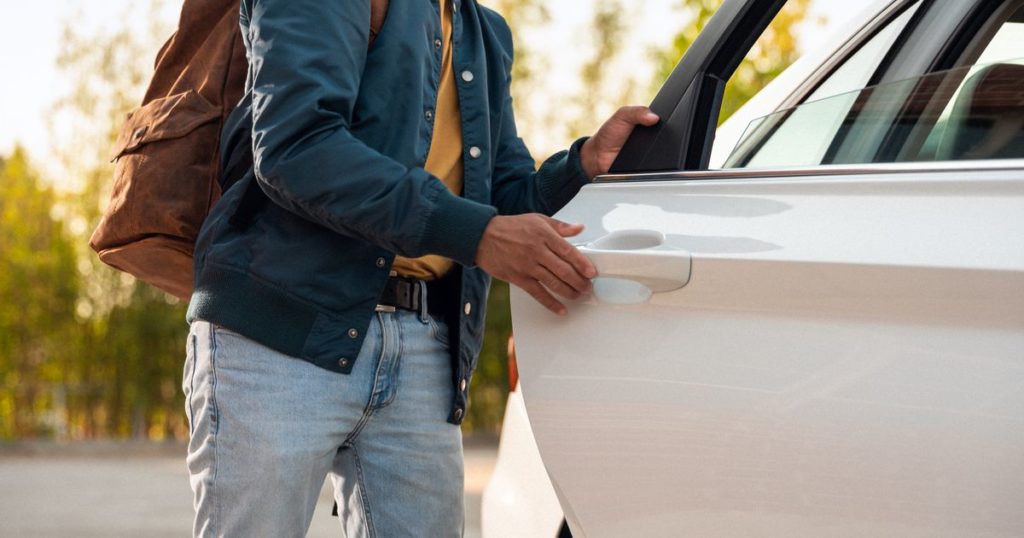In 2020, Lyft and Uber picked up more essential workers who can’t work remotely
Before the COVID-19 pandemic, the typical Uber and Lyft rider was a younger, urban-dwelling, high-income worker who would use the ride-hailing apps to go to the office, or to the movies, or to a show, and then to go out drinking.
But with events, offices, bars, restaurants, and more effectively closed, the “loyal base” — as these riders are called — has stayed away from the ride-hailing apps. While the apps are struggling to catch up to pre-pandemic ridership levels almost a year later, a new group of riders is on these platforms.
Lyft reported in its latest annual economic impact report that of the 14 percent of riders who used Lyft more during the COVID-19 pandemic, those riders were more likely to be minority women working essential jobs than those who stopped using Lyft. Read more…More about Uber, Lyft, Ride Hailing Apps, Coronavirus, and Tech
…


Before the COVID-19 pandemic, the typical Uber and Lyft rider was a younger, urban-dwelling, high-income worker who would use the ride-hailing apps to go to the office, or to the movies, or to a show, and then to go out drinking.
But with events, offices, bars, restaurants, and more effectively closed, the “loyal base” — as these riders are called — has stayed away from the ride-hailing apps. While the apps are struggling to catch up to pre-pandemic ridership levels almost a year later, a new group of riders is on these platforms.
Lyft reported in its latest annual economic impact report that of the 14 percent of riders who used Lyft more during the COVID-19 pandemic, those riders were more likely to be minority women working essential jobs than those who stopped using Lyft.
Those riders, according to the report, were also less likely to have a college degree and more likely to have a lower income. This group was almost three times as likely to be an essential worker. Lyft considers essential jobs to include firefighters, nurses, EMTs, law enforcement officers, postal and delivery workers, grocery workers, and pharmacy workers. This is in-person work that can’t be done on Zoom.
Likewise, during Uber’s latest earnings call, CEO Dara Khosrowshahi spoke about a “new customer acquisition” in a jargon-heavy explanation for why ridership hasn’t completely fallen off and will rebound. It’s because of new riders using the app instead of other options like public transit or taxis. These new riders are more “price-sensitive” than the previous loyal base, he said. They are riders who can’t work remotely like Uber’s usual customers.
ValuePenguin, a financial data firm owned by Lending Tree, found in a review of 110,000 transactions that Americans spent 69 percent less on car services in 2020 compared to 2019. Again, the usual ride-share users weren’t patronizing those platforms like they used to.
LRT can’t work from home because I’m considered an “essential worker” but I literally only leave the house for work and learning how to bike so I can do that instead of taking the bus/Uber
— Rachel (@RBflatface) October 4, 2020
More related to being late too much having to use Lyft to get to work after my car died. I was working as an Amazon shopper at Whole Foods, so also technically essential worker. Twitch tends to be unpredictable streaming, but at least being on a land line instead of Wi-Fi helps.
— ⍟?✨Mad Pagan, Mad Art✨?⍟ (@JBonnetteArt) January 10, 2021
The Uber CEO framed this pandemic-induced shift as a good thing even once the pandemic subsides, since “we’ll have a bunch of new customers who have switched over from other forms of transportation, and then we’ll have our loyal base coming back as well.”
But Khosrowshahi is betting on workers who used to take public transit to continue to pay more for a private ride even after the public health and safety threat drops.
Lyft and uber prices are absurd right now! I didn’t order my Lyft right away and the price went up by $5 in under 30 seconds! I’m an essential worker with no car who doesnt feel safe using the bus right now. NoW there’s no reason it should cost $15 to go TO WORK DURING A PANDEMIC
— Dangli (@dummyydum) April 28, 2020
I’m an essential worker with a broken truck and a job outside of bus routes. Uber is ridiculous. Please help me chime!!!!
— Wayward ?Lemon ?Grump? Pumpkin Army ? (@CrystalLimeLove) May 4, 2020
Both Lyft and Uber have suspended cheaper carpooling options on the apps to make rides safer with fewer people in a small space during the health crisis. But that means many of these new riders are being forced to pay more to ensure a safe trip to and from work.